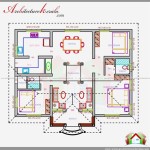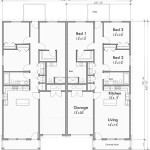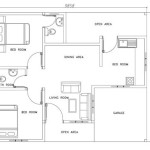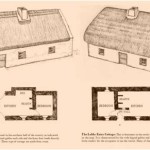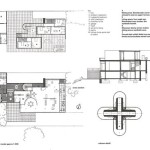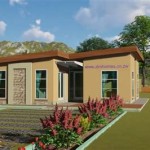4 Bedroom House Plans in Kerala Model: A Comprehensive Guide
Kerala, a state in the southern region of India, possesses a distinct architectural style deeply rooted in its climate, culture, and the availability of local materials. Houses designed in the Kerala model are characterized by their sloping roofs, courtyards, and use of natural elements like wood and clay tiles. When planning a 4-bedroom house in Kerala, adhering to these traditional principles while incorporating modern amenities requires careful consideration. This article explores different aspects of designing a 4-bedroom house in Kerala model, offering insights into layouts, materials, and key design elements.
A 4-bedroom house plan provides ample space for a family, offering independent rooms for children, guest rooms, or home office spaces. When adapted to the Kerala model, these houses often feature common areas like a spacious living room (verandah) and a dining area that are centrally located and well-ventilated. The design also prioritizes natural light and ventilation, crucial for the humid climate of Kerala.
Understanding the Core Principles of Kerala Architecture
Kerala architecture is not merely a style; it's a response to the environment. Understanding the fundamental principles is essential for designing an authentic Kerala-style house. These principles revolve around harmony with nature, functionality, and efficient use of space.
One of the most defining features is the sloping roof, typically covered with clay tiles (Mangalore tiles). This design is crucial for effectively draining rainwater, a common occurrence in Kerala. The slope also helps to cool the interiors by minimizing direct sunlight exposure. The pitch of the roof can vary depending on the aesthetic preference and the intensity of rainfall in the specific region.
Courtyards (Nadumuttom) are another hallmark of Kerala architecture. These open spaces within the house provide natural light and ventilation, creating a microclimate that helps regulate temperature. In a 4-bedroom house, the courtyard can serve as a central gathering space or a decorative element, enhancing the overall ambiance. The courtyard can also feature a Tulsi plant, an important element of traditional Hindu households.
The use of natural materials is paramount. Wood, particularly teak and rosewood, is extensively used for doors, windows, and roofing structures. Laterite stone, readily available in Kerala, is a common building material for walls and foundations. The use of these materials not only reduces the environmental impact but also contributes to the aesthetic appeal of the house, creating a warm and inviting atmosphere.
Designing a Functional 4-Bedroom Layout
Planning the layout of a 4-bedroom house in Kerala model requires careful consideration of space utilization and functionality. The arrangement of rooms should prioritize privacy for bedrooms while ensuring easy access to common areas.
The living room (verandah) typically serves as the focal point of the house, often located near the entrance. In a Kerala-style house, the living room is designed to be spacious and well-ventilated, often featuring traditional seating arrangements like charupadi (built-in benches). The dining area is usually located adjacent to the living room, facilitating easy interaction between family members.
Bedrooms should be strategically positioned to maximize privacy and minimize noise. In a 4-bedroom house, it's common to have two bedrooms on the ground floor and two on the upper floor. This arrangement allows for separation between the master bedroom and children's rooms or guest rooms. Each bedroom should ideally have an attached bathroom to enhance convenience.
The kitchen is another crucial area that requires careful planning. In a Kerala-style house, the kitchen is often designed to be spacious and functional, with ample storage space and a separate work area. It's also common to have a pantry or utility room adjacent to the kitchen for storing groceries and other household items. The kitchen should be well-ventilated to prevent the buildup of heat and odors.
In addition to the main living areas, a 4-bedroom house in Kerala model may also include a prayer room (Pooja room), a study room, or a home office. These spaces can be designed to reflect the specific needs and preferences of the family.
Integrating Modern Amenities with Traditional Design
While adhering to the principles of Kerala architecture, it's essential to integrate modern amenities to enhance comfort and convenience. This involves incorporating features like modern bathrooms, modular kitchens, and energy-efficient lighting and ventilation systems.
Modern bathrooms can be designed to complement the traditional aesthetic of the house. Using natural materials like granite and wood can create a seamless transition between the traditional and modern elements. Incorporating eco-friendly fixtures and water-saving technologies can also contribute to the sustainability of the house.
Modular kitchens offer a practical and efficient solution for kitchen design. These kitchens can be customized to fit the specific needs of the family, providing ample storage space and a streamlined workflow. Integrating modern appliances and energy-efficient lighting can further enhance the functionality of the kitchen.
Energy-efficient lighting and ventilation systems are crucial for reducing energy consumption and improving indoor air quality. Using LED lighting, solar panels, and natural ventilation techniques can significantly reduce the environmental impact of the house. Cross-ventilation, achieved through strategically placed windows and doors, can help to cool the interiors naturally, reducing the need for air conditioning.
Landscaping plays a vital role in enhancing the overall aesthetic appeal of a Kerala-style house. Planting native trees and shrubs can create a lush and inviting environment. The incorporation of water features like ponds and fountains can further enhance the natural ambiance of the house. The landscape design should also prioritize sustainability, using drought-tolerant plants and water-efficient irrigation systems.
Furthermore, smart home automation systems can be integrated discreetly without compromising the traditional aesthetic. Lighting, security, and temperature control can be managed remotely, offering convenience and energy savings. These systems can be seamlessly integrated, preserving the traditional look and feel of the house.
In summary, designing a 4-bedroom house plan in Kerala model involves a delicate balance of traditional principles and modern amenities. By understanding the core elements of Kerala architecture and incorporating modern features strategically, it is possible to create a functional, sustainable, and aesthetically pleasing home that reflects the unique cultural heritage of Kerala.

4 Bedrooms Double Floor Kerala Home Design 1820 Sq Ft Bedroom 2 House Plan Be Plans

4 Bedroom Latest Model Home Design With Inside Courtyard In Kerala Traditional Wit N House Plans Free

4 Bedroom House Plans In Kerala 2 Story Style Bhk Ho Design Duplex

4 Bedroom Cost Effective Simple Home Design With Free Plan Kerala Plans Square House Bungalow Floor

20 4 Bedroom House Plans Ideas For N Kerala Styles

Colonial Style 4 Bedroom Home Plan In 1799 Sqft Suitable For 5 Cent Small Plot Free Kerala House Plans Bungalow Floor Building Designs

Kerala Style Double Y House Plans Under 1600 Sq Ft For 5 Cent Plots Small Hub

Kerala House Plan Photos And Its Elevations Contemporary Style Elevation Traditional Plans With Floor Small

4 Bedroom House Plans Kerala Style Architect

20 4 Bedroom House Plans Ideas For N Kerala Styles

